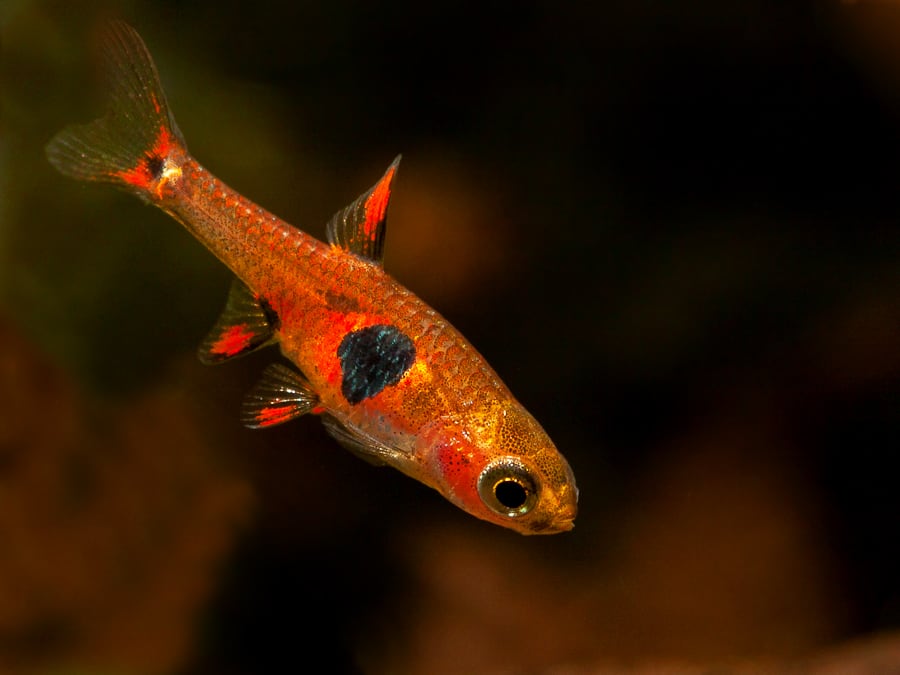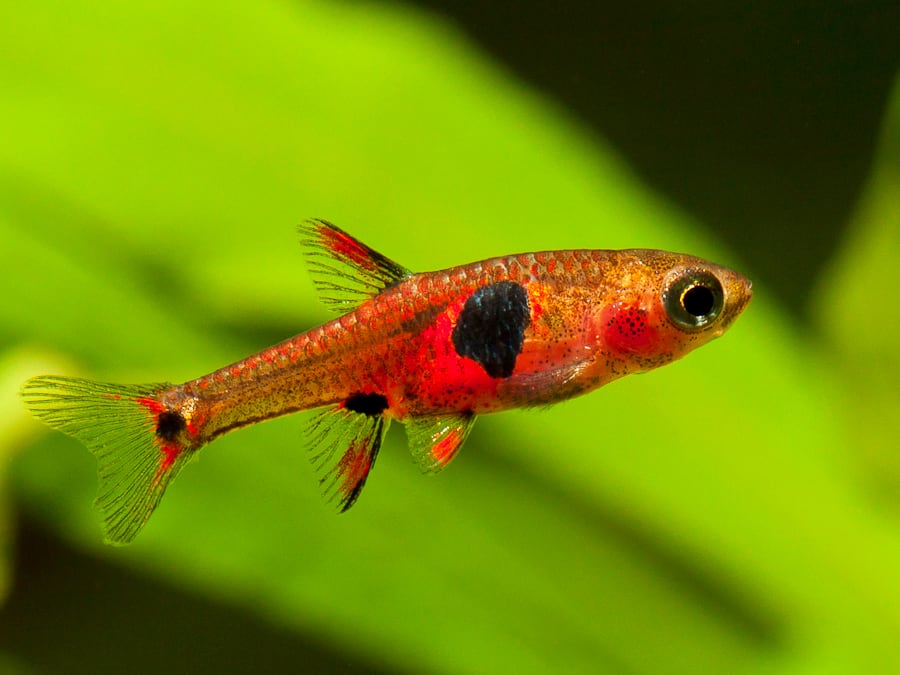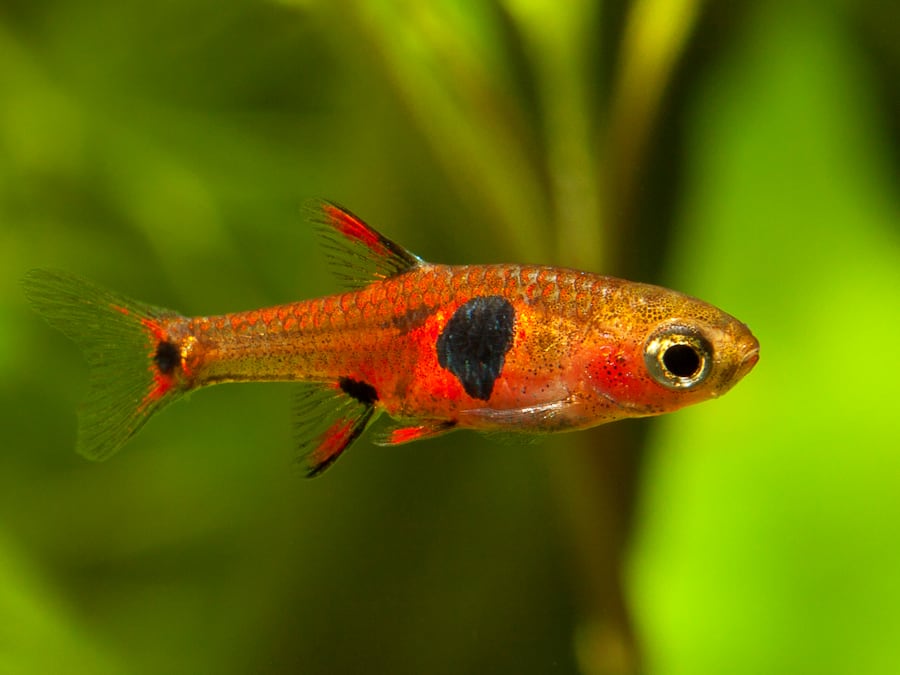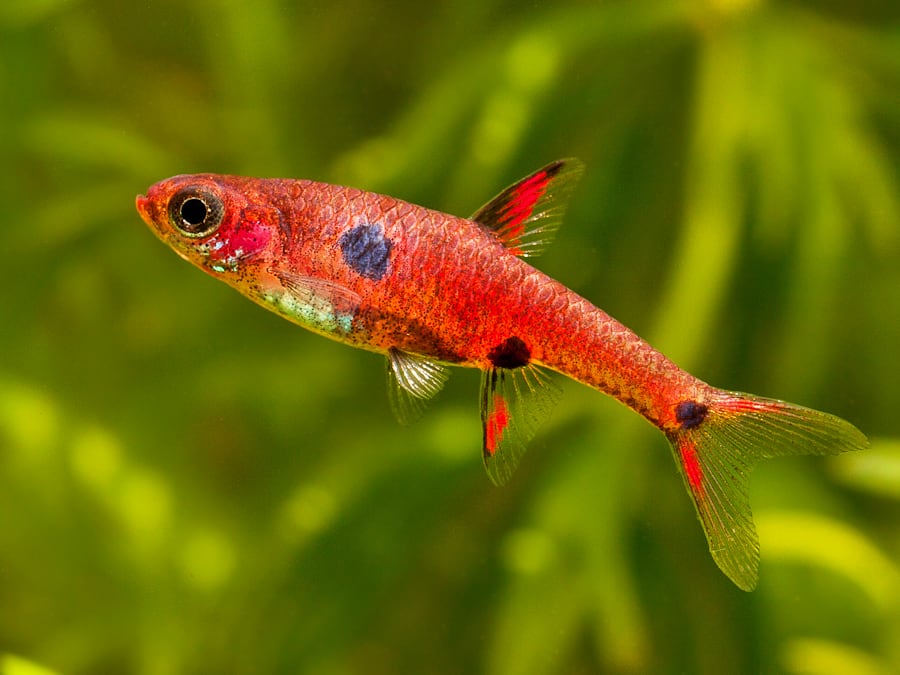The Strawberry rasbora (Boraras naevus) is another small member of the Boraras genus, a beautiful tropical fish which is very popular among aquascapers. It’s a perfect fish to choose for a nano setup but it also goes well in more large aquariums.
Geographic distribution
Boraras naevus can be found mainly in the swamps and rice paddies of Thailand, north of Surat Thani province. There’s also been encounters recorded at additional locations within the lower Tapi river drainage on the Gulf of Thailand.
Can also be found in Malaysia, Sumatra, Singapore and surrounding areas.
Description
Easily distinguishable by the large black spot situated in the center of the body, and two smaller dark dots, one at the base of the caudal fin and the other at its tails base. If you give it optimal diet and care, many males of this species will display bright ruby red coloration.
Strawberry rasbora’s behaviour
The Strawberry Rasbora usually occupies the top and middle level of the water column, although you can often see it swimming and feeding in the middle and bottom levels as well.
Due to its very small size and peaceful behaviour, it is best to exclude this fish from community tanks and best kept in groups of 6 and more, ideally 15+. It can be safely kept with small aquarium shrimp and other large and peaceful invertebrates.
Diet
The Strawberry rasbora will easily accept most high-quality dried fish food like pellets and flakes and will thrive on a carnivorous diet consisting of Tubifex or bloodworms cut in bite-size pieces. Will also enjoy microworms and freeze-dried Artemia.
Reproduction
Strawberry rasbora males are usually slimmer and they tend to display a deep saturated red when in breeding form. Females are bulkier, have rounder bellies and showcase a more washed coloration.
Like many small cyprinids, the Strawberry rasbora scatters its eggs in a continuous manner and both parents lack parental care thus they will eat their eggs if they’ll spot them.
The pair will lay a small number of eggs on a daily basis and if your tank is densely planted, there is a good chance that some will hatch eventually.
For a more controlled and supervised reproduction, place 2-3 pairs in a separate smaller tank where you’ll be conditioning them for optimal spawning results.
Keep this tank in a low light area and cover the bottom with plastic mesh which will ensure that the fish can’t reach and eat the fallen eggs.
The temperature should be on the higher side in the specified range (28°C). Place some Java moss in the aquarium and use a small air-powered sponge filter.
After the initial spawning session, expect the eggs to hatch around the second day. The fry will survive on their yolk sacs for another 24 hours or so. After this period of time they will require microscopic food. In a week to 10 days you can easily feed them newly-hatched Artemia and microworms.






